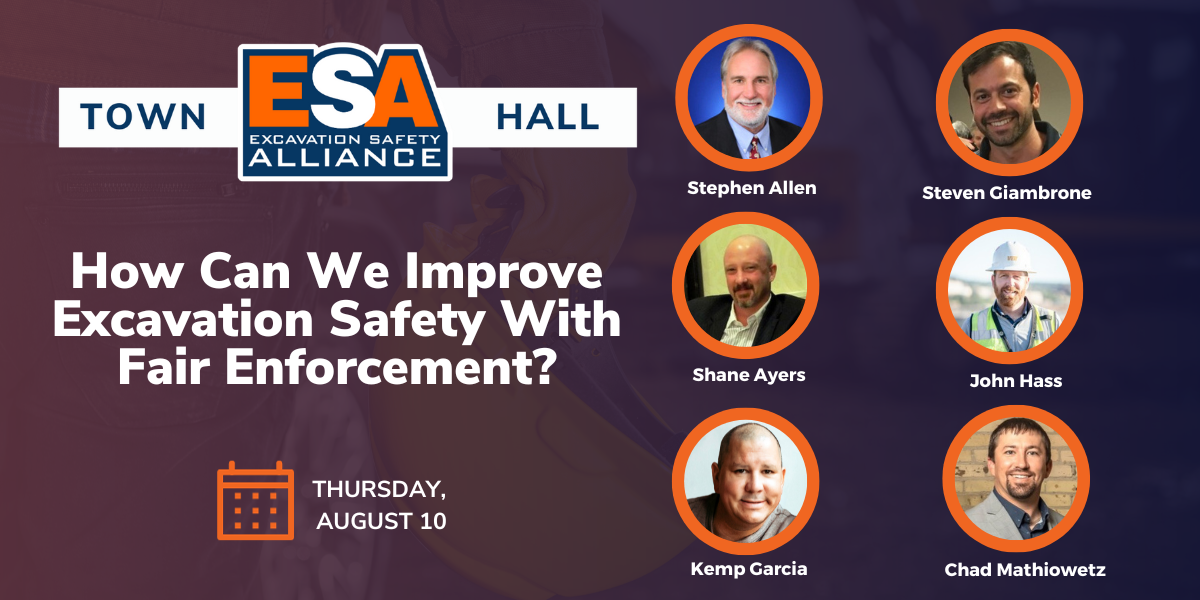
On August 10th, nearly 90 industry stakeholders converged for an insightful discussion centered around the existing challenges and promising avenues for improvement in enforcement.
Kicking off the Town Hall, Scott Landes posed a fundamental question that captured the essence of the Town Hall: How is enforcement structured across states, and does it offer equitable treatment for all stakeholders involved?
Shane Ayers offered an insightful perspective. He shared that for an enforcement process to be deemed fair and effective, it's imperative to create a holistic system. In his words, “all stakeholders that participate in damage prevention have to be involved in the enforcement recommendations.” His call for unity laid emphasis on the indispensable role of excavators, utility locators, One Call centers, DOTs, and PUCs. Such inclusivity would not only foster fairness but also significantly ramp up efficacy in addressing excavation-related concerns.
Delving deeper, it was highlighted that some enforcement programs operate primarily on a complaint-based system. The potential consequences of such a system can include delayed problem resolution and potential safety risks due to reactive rather than proactive issue management. John Hass also shed light on a crucial underlying issue – the inaccuracies rampant in mapping data. He underscored this by stating that “poor mapping is often the root cause of many excavation damages.”
The conversation transitioned to a vital question: why is there a strong emphasis on enforcing gas utilities over others? Stephen Allen pointed out that while proactive measures have significantly reduced damages to gas lines over the years, there's a noticeable disparity when it comes to other utilities. The heightened risks associated with damaging gas utilities certainly warrant attention, but a comprehensive approach is needed to ensure the protection of all utilities.
Kemp Garcia shared success stories, emphasizing that collective team initiatives can gain legislative backing. By joining forces, presenting cohesive strategies, and supporting proposals with solid data, they managed to capture the attention of policymakers.
Steven Giambrone highlighted a significant disparity in the current system, pointing out that while excavators face a myriad of regulations, utilities often have an easier path. Such an imbalance emphasizes the need for a regulatory overhaul to ensure fairness for all parties involved.
Chad Mathiowetz spotlighted Subsurface Utility Engineering (SUE) as a pivotal tool. By advocating for its use, he stressed that SUE could help ensure utilities are installed correctly, thus potentially reducing excavation-related issues in the future.
In essence, this Town Hall was a melting pot of ideas, experiences, and visions. It underscored the pressing need for collaborative efforts, innovative solutions, and revisited regulatory frameworks. For every professional involved in excavation, this discussion offers valuable insights, presenting both challenges to ponder and solutions to explore.
If you missed the live discussion or wish to soak it in once more, the full Town Hall can be found by HERE.

![ESM Sidebar Ad[87] ESM Sidebar Ad[87]](https://excavationsafetyalliance.com/hubfs/ESM%20Sidebar%20Ad%5B87%5D.gif)



Comments